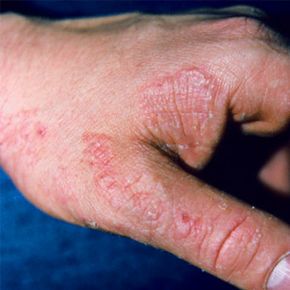Ringworm sounds downright scary, conjuring images of creepy, crawly critters invading the skin. The good news is that ringworm is actually a misnomer because there are actually no worms involved. Ringworm is caused by dermatophyte, a fungus. The resulting fungal infection is also known as tinea [source: National Center for Infectious Diseases].
Ringworm can affect several areas of your body. In fact, the name of each specific type of ringworm is created by combining the word tinea with the Latin term for the infected area [source: Trevino, Cairns]. Common ringworm infections include:
Advertisement
- Tinea corporis, which affects the general skin surfaces of your body. When you think of ringworm you're probably thinking of this type, with the typical round, scaly spots.
- Tinea capitis, which affects the scalp. This condition is more common in kids and teens, and doesn't usually occur after puberty.
- Tinea cruris, which affects the groin area. This condition is commonly known as jock itch.
- Tinea manuum, which affects the hands, especially between fingers and on the palms.
- Tinea unguium, which affects the fingernails and toenails. Sometimes this is called fungal nails.
- Tinea pedis, which affects the feet. You probably have heard this condition referred to as athlete's foot [source: Stöppler].
If you suspect you have a ringworm infection, see a doctor. Generally, a doctor can diagnose ringworm infections by sight but also may use a special blue light, known as a Wood's lamp, to make a correct diagnosis. If you have ringworm, your skin often looks florescent under this light. Your doctor might even take a sample of the infection and look at it under a microscope [source: National Library Medicine].
Although a ringworm infection isn't usually serious, it can have complications. It can leave you open to secondary bacterial infections and other types of skin disorders. If you suspect that your ringworm has caused an infection or is spreading, seek help from a medical professional immediately [source: National Library Medicine].
If you've noticed some odd-looking areas on your skin and you want to know if they could be a ringworm infection, check out the list of ringworm symptoms on the next page.
Advertisement

